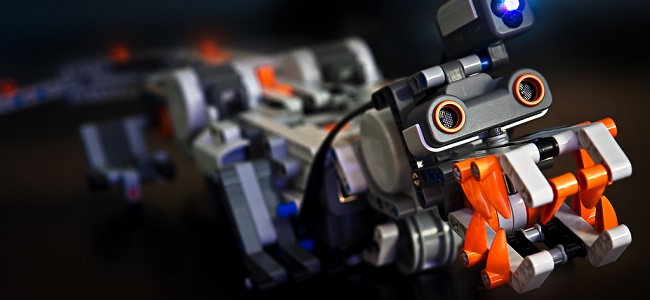If your school is doing a lot of on-screen programming, like Scratch or Espresso, it may be worth considering doing some robotics. This gives students something physical to work on, and adds a whole new level of engagement and fun. I thought it would be a good time to share a couple of little projects that are both classroom and budget friendly.
The first is a little wheeled-robot kit, and the reason I like this one is because students love wheeled robots. Having the chance to build one that they can get up and running, quickly and easily, is a perfect way to start computer science and also to keep them engaged when it gets to the trickier topics.
Regardless of age, when it’s the first time building a robot, we recommend starting with a basic kit. A good kit will include a fairly stable base, 2 motors with wheels and appropriate gears, decent quality fixings to hold everything together.
A kit such as this saves a lot of time and frustration at the beginning, and allows students to get something working fairly quickly. No, it won’t be the best, most efficient or even prettiest robot that can be built, but It does make for a great learning curve, providing students the opportunities to develop it, customise it and solve physical/aesthetic problems themselves – isn’t that what makes great learning, as opposed to giving them an already perfect solution?
Second project: Start hacking.
Computing, coding, logical computation – whichever boring term you decide to use to describe the shake up in the curriculum - there is something that is hugely fun that doesn’t even get a mention on the syllabus (though do correct me if I’ve missed it). What about learning by hacking stuff?
Why not have a day when students bring in some old toys, take them apart and, one way or another, work out what the electronics bits inside do (a Google search of part numbers is a great start). Then take it a step further and see if they can rewire bits and pieces and integrate an Arduino, or a preferred microcontroller board? Alternatively, they could just reconstruct parts, or perhaps even work out how to fix their favourite childhood toy piano.
Isn’t that really why we’re teaching kids to code, so that they learn how to problem solve, question, think things through and work out why stuff doesn’t work and then fix it? Computer science is so much more than sitting at a computer and typing instructions, and we need to make sure students get to see all of the fun stuff and gain the transferable skills.
Have you used robotics in your school? Share your experiences in the comments.


















